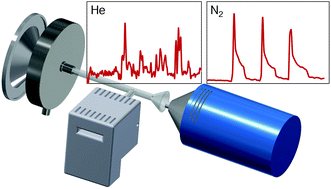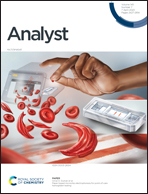Optimization of confined direct analysis in real time mass spectrometry (DART-MS)†
Abstract
Direct analysis in real time mass spectrometry (DART-MS) is seeing increased use in many fields, including forensic science, environmental monitoring, food safety, and healthcare. With increased use, novel configurations of the system have been created to either aid in detection of traditionally difficult compounds or surfaces, provide a more reproducible analysis, and/or chemically image surfaces. This work focuses on increasing the fundamental understanding of one configuration, where the DART ionization gas is confined in a junction, such as with thermal desorption (TD) DART-MS. Using five representative compounds and a suite of visualization tools, the role of the DART ionization gas, Vapur flow rate, gas back pressure, and exit grid voltage were examined to better understand both the chemical and physical processes occurring inside the confined configuration. The use of nitrogen as a DART ionization gas was found to be more beneficial than helium because of enhanced mixing with the analyte vapors, providing a more reproducible response. Lower Vapur flow rates were also found to be advantageous as they increased the analyte residence time in the junction, thus increasing the probability of its ionization. Operation at even lower Vapur flow rates was achieved by modifying the junction to restrict the DART gas flow. The DART exit grid voltage and gas back pressure had little observed impact on analyte response. These results provide the foundation to better understand and identify best practices for using a confined DART-MS configuration.



 Please wait while we load your content...
Please wait while we load your content...